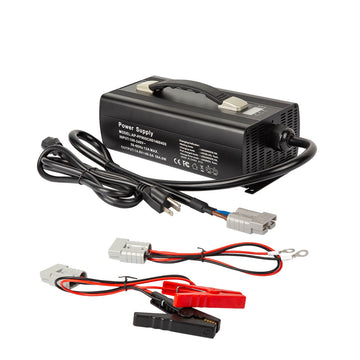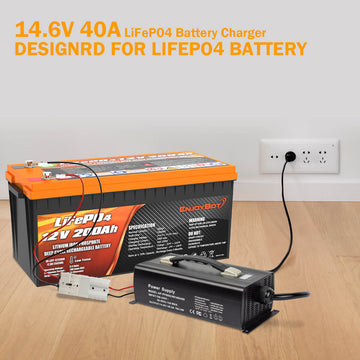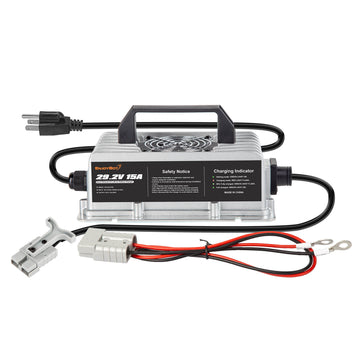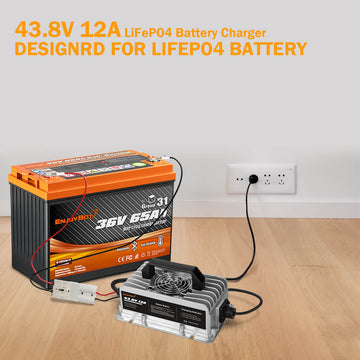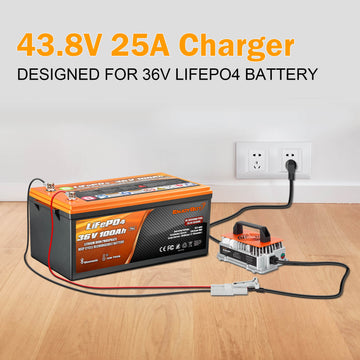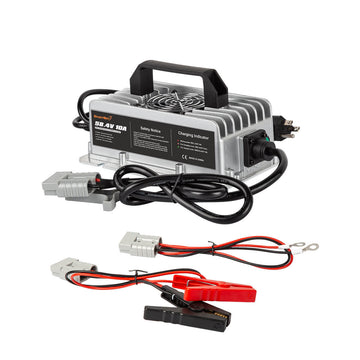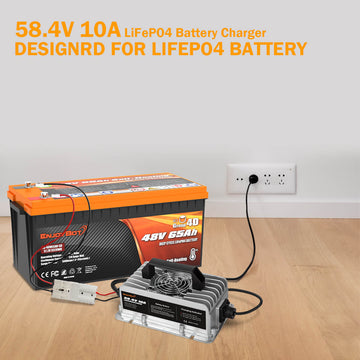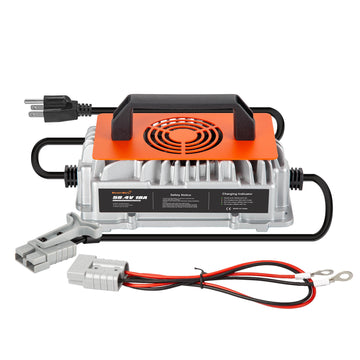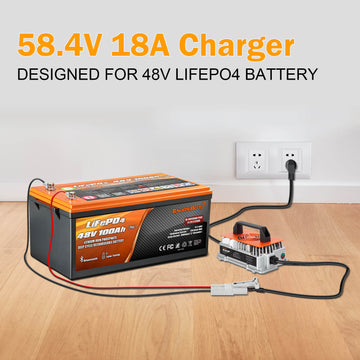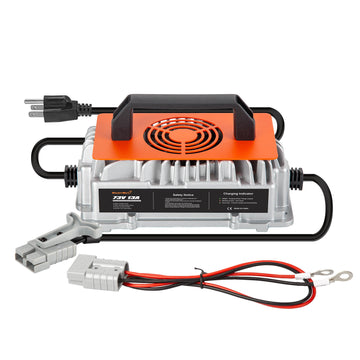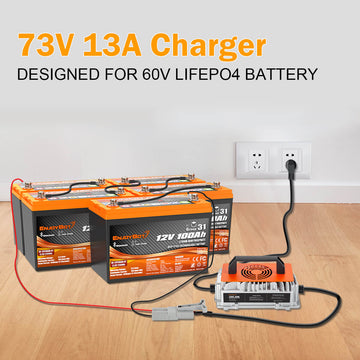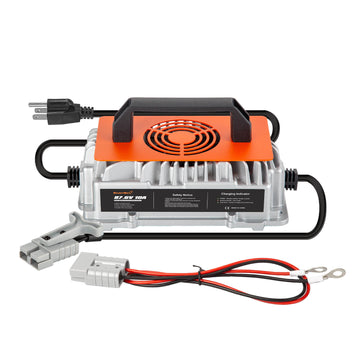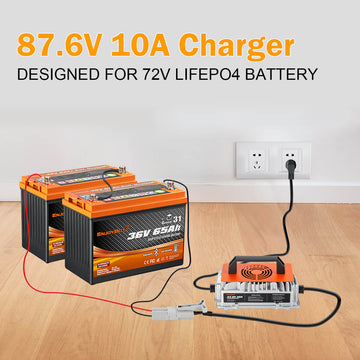What Kind Of Battery Do I Need For A Trolling Motor? A Comprehensive Guide
When it comes to optimizing your trolling motor performance, selecting the right battery is a critical decision. The type and size of the battery can significantly impact your boating experience, determining factors such as runtime, thrust, and overall efficiency. In this guide, we'll delve into the world of trolling motor batteries, exploring different types and sizes to help you make an informed choice for your boating adventures.
Table of contents of this comprehensive guide:
-
Choosing the Best Trolling Motor Battery
-
Flooded Lead-Acid Batteries
-
AGM (Absorbent Glass Mat) Batteries
-
Lithium-Ion Batteries
-
What size lifepo4 battery for the trolling motor?
- Step 1: Determining the Trolling Motor's Max Amp Draw and Max Power.
- Step 2: Finding a Battery that matches your Motor's Requirements.
-
How long does a trolling motor battery last
- Step 1: Basic Calculation
- Step 2: Accounting for Additional Devices
- Field Test
1. Choosing the Best Trolling Motor Battery
When you start looking into batteries, the sheer number of options can be overwhelming. It's important to consider the pros and cons of each type. The three most prevalent marine batteries in the market are Flooded Lead Acid (also known as wet-cell), AGM (absorbed glass mat), and Lithium Iron Phosphate (LiFePO4). Each of these has its own set of characteristics and considerations to keep in mind.
Types of Trolling Motor Batteries:
Flooded Lead-Acid Batteries:
Traditional and cost-effective. These batteries are easily the most common -and least expensive- of all the battery options. They are easily found in big-box retailers and the less expensive options can readily be found for around $100 or less.
Requires maintenance with periodic checks on water levels. In flooded lead-acid batteries, the electrolyte, which is a mixture of water and sulfuric acid, can evaporate over time due to the battery's normal operation. Therefore, it's essential to monitor and maintain the proper fluid levels to ensure the battery's optimal performance. Neglecting these maintenance tasks is highlighted as a critical issue, as it can result in several adverse consequences. First and foremost, the lifespan of the battery can be significantly shortened. The evaporation of electrolytes without replenishment can lead to increased concentration levels of acid in the remaining solution, which, over time, can negatively impact the battery's internal components and overall health. This, in turn, can result in decreased performance, reduced capacity, and potentially even failure of the battery to hold a charge.
Solid performance but can be heavier than other types. In the context of boating, where weight can impact performance, fuel efficiency, and maneuverability, the weight of the battery becomes a crucial factor in decision-making. A typical flooded lead-acid battery used for marine applications might weigh anywhere from 50 to 70 pounds (approximately 23 to 32 kilograms). In contrast, newer battery technologies, such as lithium-ion batteries or AGM batteries (Absorbent Glass Mat), are generally lighter for an equivalent power capacity. For instance, a lithium-ion battery of the same capacity might weigh around 30 pounds (approximately 14 kilograms) or even less.
AGM (Absorbent Glass Mat) Batteries:
The various aspects of AGM (Absorbent Glass Mat) batteries, particularly in comparison to flooded lead-acid batteries, provide insights into their cost, structure, weight, maintenance, and potential issues.
The cost of AGM batteries has reduced in recent years but remains relatively higher compared to flooded lead-acid batteries. It suggests that AGM batteries may cost as much as twice the price of a flooded lead-acid battery of the same group size. A 12V AGM battery of a certain group size might cost around $200, while a flooded lead-acid battery of the same size could cost around $100 or less.
AGM batteries are described as being completely sealed. Unlike flooded lead-acid batteries that use liquid acid, AGM batteries utilize an electrolyte absorbed into mats that contact the plates within. This design minimizes the risk of spills, making them easier to transport.
From a weight perspective, the paragraph suggests that AGM batteries are roughly equivalent to flooded lead-acid options, if not slightly heavier. A typical AGM battery of a certain capacity might weigh around 50-60 pounds, similar to the weight of a flooded lead-acid battery of the same capacity.
AGM batteries are labeled as "maintenance-free" due to their sealed nature, eliminating the need to monitor and maintain acid levels. They tend to last slightly longer than flooded lead-acid batteries if properly maintained, with a reduced likelihood of sulfation. AGM batteries may have a lifespan of 4-6 years, while flooded lead-acid batteries of the same capacity might last 2-4 years under similar conditions.
The AGM batteries, when completely drained, have the potential to be more permanently affected than lead-acid batteries. Deeply discharging an AGM battery may result in irreversible damage, reducing its overall lifespan, whereas flooded lead-acid batteries are generally more tolerant of deep discharges.
Lithium-Ion Batteries:
If you've been on the lookout for new trolling motor batteries lately, you may have noticed a significant shift in the market landscape. The rise of Lithium Iron Phosphate (LiFePO4) marine batteries is transforming the way anglers power their trolling motors, fish finders, and other essential accessories. In this blog, we delve into the world of lithium marine batteries, exploring their advantages and the real-life data supporting their growing popularity.
The Rise of Lithium Marine Batteries: A Game-Changer in Power Technology. Lithium marine batteries have emerged as a prominent choice among anglers, promising enhanced performance and longevity. Although they currently stand as the most expensive option among common battery types, the evolving market dynamics indicate a promising future. With more manufacturers entering the scene and introducing lithium options, the prices of these batteries are expected to decline over time.
Lighter, Faster, and More Efficient: The Advantages of Lithium Boat Batteries. While Lithium boat batteries may still be beyond the budget of many anglers, their main advantage lies in a substantial reduction in weight compared to other battery types. This weight reduction contributes to improved boat maneuverability, quicker acceleration, and a modest increase in top-end speed. Real-life data supports these claims, with users reporting a noticeable difference in performance. Moreover, Lithium batteries are recognized for their ability to consistently output higher voltage levels over extended periods. This, coupled with their potential to last several years longer than traditional battery types, positions them as a durable and reliable choice for avid boaters.
The era of Lithium marine batteries is ushering in a new wave of efficiency and performance for boating enthusiasts. As prices continue to adjust and technology advances, the once-premium option is becoming a feasible and smart investment for those seeking long-term reliability and enhanced boating experiences.
2. What size lifepo4 battery for the trolling motor?
LiFePO4 batteries have become a favored choice in the trolling motor community due to their impressive energy density and lightweight composition. When choosing the right LiFePO4 battery size for your trolling motor, careful consideration of both voltage and ampere-hour (Ah) ratings is essential.
Voltage compatibility is paramount to avoid potential harm to your trolling motor. While the majority operate on 12 volts, high-thrust models may necessitate 24 or 36 volts. It's imperative to select a LiFePO4 battery that aligns with your trolling motor's voltage requirements. Additionally, a higher Ah rating translates to increased energy storage and extended runtimes.
Step 1: Determining the Trolling Motor's Max Amp Draw and Max Power.

Refer to the MINN KOTA HELP CENTER table to pinpoint what your trolling motor's Max Amp draw might be. Acknowledge the challenges in specifying exact amperage draw at different speeds due to environmental factors. The chart recommends consulting a Conductor Gauge and Circuit Breaker Sizing Table for maximum amp draw based on your motor's specifications. Real-life scenarios introduce variability in amp draw, influenced by factors such as operating and battery conditions, speed settings, and motor efficiency.
Step 2: Finding a Battery that matches your Motor's Requirements.

The compatibility chart outlines how Enjoybot batteries seamlessly integrate with trolling motors. Remember that Enjoybot batteries are specialized deep-cycle options for continuous power in trolling motors, not designed for engine starting. Given the Battery Management System (BMS) settings, they are unsuitable as cranking batteries. Enjoybot deep-cycle marine batteries shine in providing consistent and reliable power for trolling motors once your boat's engine is operational.
It is vital to incorporate an over-current protection device, like a circuit breaker or fuse, owing to the surge in current during trolling motor start-up. Excessive current could result in over-current discharge, potentially causing irreversible damage to the BMS. Note that such damage falls outside the coverage of Enjoybot LiFePO4 battery's 10-year warranty.
These two steps ensure you choose the right LiFePO4 battery size for your trolling motor. By considering voltage, Ah ratings, and real-life variables, you can make an informed decision that aligns with your trolling motor's specific requirements.
3. How long does a trolling motor battery last
Calculate the estimated runtime you need for your fishing trips and choose a LiFePO4 battery with an appropriate Ah rating to meet those requirements. Fortunately, calculating the running time is a straightforward process that ensures you get the most out of your battery during your fishing adventures.
We've included the Garmin table below to assist in calculating the power consumption for a 24V trolling motor system.
Step 1: Basic Calculation
Suppose your lithium battery has a capacity of 100Ah (ampere-hours), and your trolling motor draws 20 amps during operation. To find out how long your battery will last, divide the battery's capacity by the trolling motor's power draw:
100Ah ÷20A=5 (hours)
In ideal conditions, your battery would run for approximately 5 hours before requiring a recharge. The power consumption of a trolling motor depends on various factors, including the motor's thrust rating, the speed setting, and the condition of the water (wind, waves, and currents). Trolling motors are typically rated based on their thrust, measured in pounds. The higher the thrust, the more power the motor consumes. When staying still for fishing or using the trolling motor at lower speeds, the current draw may be less than the maximum rated current. Some trolling motors have variable speed settings, and at lower speeds, the power consumption is generally lower.
Step 2: Accounting for Additional Devices
Imagine you have a light drawing 6amps and a fish finder drawing 2 amps, in addition to your trolling motor. To incorporate these additional electrical demands, add them to the power draw of the trolling motor:
20A+6A+2A=28A
Now, divide the battery's capacity by the total power draw:
100Ah÷28A≈3.57 (hours)
Considering the combined power draw, your battery, under continuous use, would last about 3 hours and 34 minutes before needing a recharge. Understanding the running time of your lithium trolling motor battery is essential for effective power management during your fishing trips.
To effectively plan boating or fishing excursions, it is important to evaluate the operational duration of a lithium trolling motor battery before requiring a recharge. This involves considering factors such as the battery's capacity, the power consumption of the trolling motor, and additional electrical requirements. By systematically calculating these elements, one can derive a reliable estimate of the battery's runtime.
However, it's essential to acknowledge that the actual running time may vary due to factors such as temperature, battery chemistry, and other environmental conditions. To optimize the performance of your battery, it is advisable to follow the charging and maintenance guidelines provided by the manufacturer.
Let me tell you something exciting about our rugged 100Ah models. We've got plenty of happy customers who've given us the lowdown on their experiences. They're telling us they've enjoyed a solid two days or more of non-stop fishing action before needing to plug in for a recharge. Now, if that doesn't speak volumes about the durability of our 100Ah models, I don't know what does!
To maximize battery life, practice efficient energy management. Avoid running the trolling motor at full throttle constantly, and consider using a variable speed setting to conserve energy. Carry a backup battery if possible, especially on longer fishing excursions, to ensure you don't find yourself stranded on the water.
In conclusion
Selecting the right trolling motor battery is a crucial decision for any angler. Whether you opt for a traditional lead-acid battery, an AGM variant, or the cutting-edge LiFePO4 technology, understanding your specific needs and the technical specifications of the batteries will help you make an informed choice. By considering factors such as voltage, ampere-hour rating, and runtime, you can confidently power your trolling motor and navigate the waters with ease on your next fishing adventure.

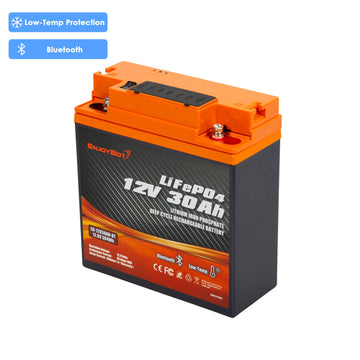
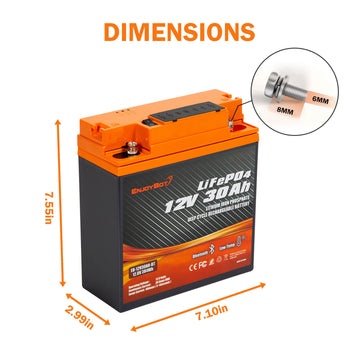
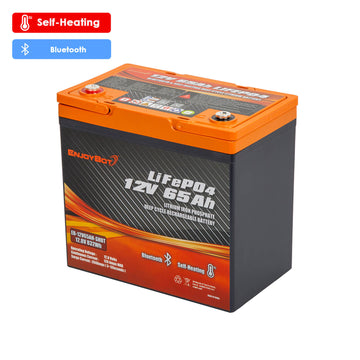
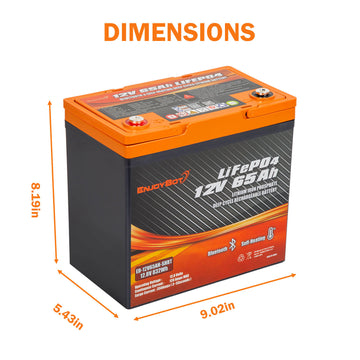
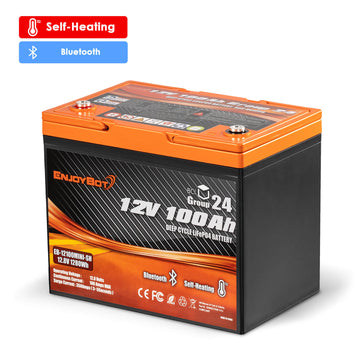
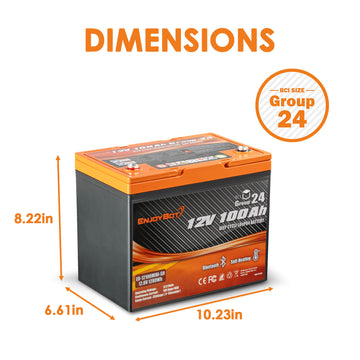

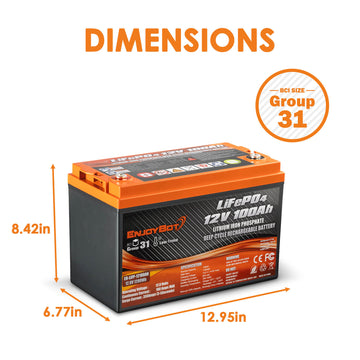
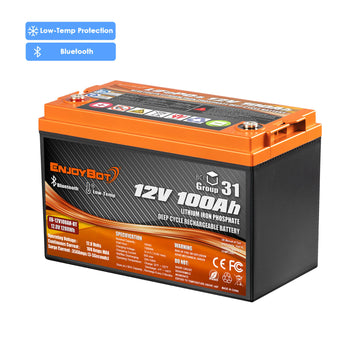
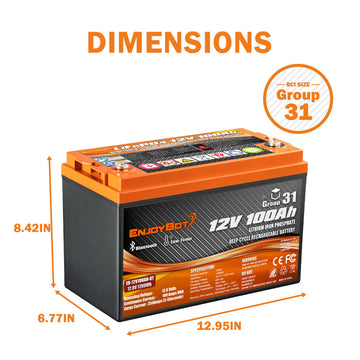

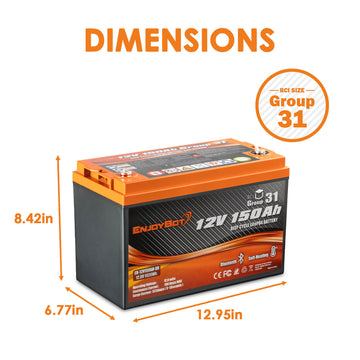





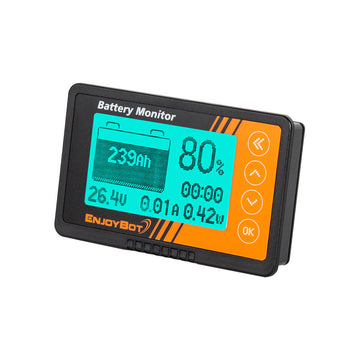
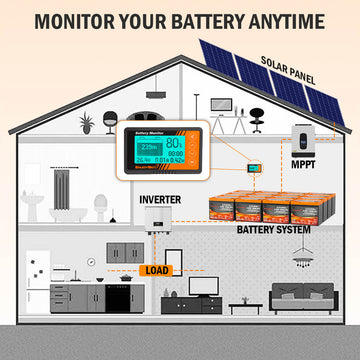
![[Upgraded Version] Enjoybot 14.6V 20A Waterproof Mountable LiFePO4 Lithium Battery Charger For 12V LiFePO4 Battery](http://enjoybotbattery.myshopify.com/cdn/shop/files/14.6V_20A_Waterproof_Battery_Charger_1_360x.jpg?v=1752565609)
![[Upgraded Version] Enjoybot 14.6V 20A Waterproof Mountable LiFePO4 Lithium Battery Charger For 12V LiFePO4 Battery](http://enjoybotbattery.myshopify.com/cdn/shop/files/14.6V_20A_Waterproof_Battery_Charger_2_360x.jpg?v=1752637374)
